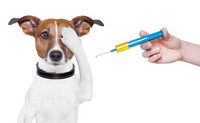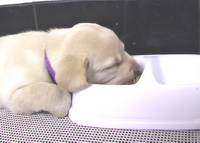Key points of obedience training
 Obedience classes with their endless repetitions, many owners find boring and almost useless. And this is fundamentally wrong. The main task of any training is to achieve dog controllability. On the one hand, this is the way to tame the beast, on the other hand, the development of the dog’s body and psyche, and on the third, the birth and strengthening of that incredibly beautiful and strong mutual feeling that combines love, devotion and responsibility. It should be remembered that disregard for the problem of controllability of dogs of large breeds is fraught with terrible consequences, and if a dog of this size gets out of control, he can be deadly for both the owner and others.
Obedience classes with their endless repetitions, many owners find boring and almost useless. And this is fundamentally wrong. The main task of any training is to achieve dog controllability. On the one hand, this is the way to tame the beast, on the other hand, the development of the dog’s body and psyche, and on the third, the birth and strengthening of that incredibly beautiful and strong mutual feeling that combines love, devotion and responsibility. It should be remembered that disregard for the problem of controllability of dogs of large breeds is fraught with terrible consequences, and if a dog of this size gets out of control, he can be deadly for both the owner and others.
It is very good if you started training dogs from the “kindergarten” age (see “Primary Puppy Education”). If at the age of 5–6 months the puppy has already mastered the main commands, then in the future you can only hone the skill of the trainer, ensuring that the commands are performed “purely” from the first time and under any conditions.
For the initial stage of training, it is enough that the puppy is more or less able to walk on a leash, stop, sit down and lie down on your order, know your place in the house, exercise restraint for a few minutes with the “Wait!” Command, approach the trainer with the command “ To me! ”, And also to know the prohibiting command“ Fu! ”(“ It is impossible! ”). Additional skills include the appraisal, the ability to overcome various obstacles, the preparatory stage for follow-up work (“Nuhai!” And “Search!” Commands), as well as some elements of the defense course (“Fas!” And “Give!” Commands).
Puppy initial training is very difficult to overestimate. For example, dogs that have not mastered the movement at the trainer’s left foot require a tougher approach when practicing the “Nearby!” Command in order to wean them from jerking or pulling the leash. Home-bred dogs, loaded with obstacles that are feasible by age, as a child, would cause a lot of torment to their masters when training to work in the obstacle course. You may have to interest the animal by personal example, moving in front or with the dog through all obstacles.
Key points of obedience training Puppies, not originally accustomed to exposure, have been learning to work at a distance for a very long time. Particular patience, perseverance, and restraint are required by wayward and high-energy dogs. They, for example, get used to execute the Sit! Command only by sitting down for a second and then jumping up again to behave as they see fit. Puppies that were not played with by throwing a toy are extremely hard for the “Aport!” Team. The following methods have to be used for training such dogs: forcibly putting a wand into the mouth and forcing the dog to hold it; specifically “animate” an aportizing object with the help of a rope tied to it or, together with a dog, run after an abandoned wand.
Often, young dogs perform commands inattentively and with laziness, as if doing a favor to the owner. However, with the right approach, even the most wayward dog can work more vigorously and clearly – it all depends on the trainer. Let me remind you once again that dogs of service breeds are very clever and able to understand people. If you are satisfied with the careless performance of the exercise, then your pet will demonstrate it to you. However, if you want the dog to do everything actively and cheerfully, then you yourself, as a trainer, must work vigorously, not stint on praise and persistently correcting the error of your ward. That is how you teach your dog to work and get what you want.
The course of obedience allows you to reveal the whole individuality of the dog. And for this you should carefully develop the entire training program based on a number of key points. One of them is constancy. A dog that is constantly corrected and corrected for wrong actions, learns faster and works more stable than in the case of unsystematic, inconsistent or late stimulation from the trainer. Constancy is inseparable from timeliness.
Representatives of service breeds are large and strong animals, so it would be a mistake to think that only such brute force and hard pressure are needed to train such giants. This is fundamentally wrong. All dogs respond to patience, perseverance, love and praise. Timeliness in all that concerns promotion and correction is more important than the force approach. If too much time passes between the action of the dog and your reaction to it, the effect of training will be zero.
The necessary elements of quick training are also energy and enthusiasm, which are necessary primarily to keep the dog’s attention and as a positive motivation. Classes can not be carried out sluggishly and boring, as, indeed, and to tear their irritation on the dog.
The key moments of obedience training. It is so happened that dogs, trained under the guidance of an instructor by the group method, recognize the leadership of a person only on the training platform.



